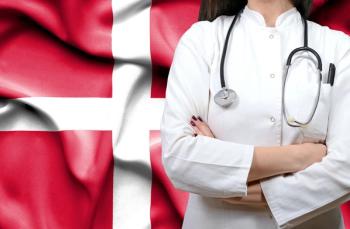
Fostering hope during a patient’s road to wellness
Internist and cancer survivor Wendy Harpham, MD, on the role of hope in a patient’s recovery from illness and how physicians help foster this emotion.
When it comes to overcoming medical adversity, patients rely on their physicians as guides to treatment options and navigators through the science of medicine.
But according to Wendy Harpham, MD, physicians should also assist those in their care to become “healthy survivors,” defined as survivors who receive expert, compassionate care and live as fully as possible. Having experienced the challenges of survivorship through her own cancer diagnosis, Harpham offers a useful perspective on the physician’s role in patients’ hope and pursuit of healthy survivorship.
Medical Economics recently spoke to Harpham at the American College of Physicians Internal Medicine Meeting in New Orleans. There, she gave the Nicholas E. Davies Memorial Award Lecture, named after the late regent and president-elect of the ACP, in recognition of scholarly activities in the humanities and history of medicine.
Her lecture included highlights from her latest book,
Medical Economics: So tell us about your personal story and what lead to the book.
Wendy Harpham, MD: In 1990, I was a solo practitioner of internal medicine, I was happily married, had three children under six years old, and was diagnosed with a slow-growing cancer with no known cures. Yanked to the other side of the stethoscope, I gained new insight into the challenges of getting good care and living as fully as possible. I was in and out of cancer treatment every year for the first eight years and then periodically for a total of 17 years before I achieved my current durable remission.
A few years into my survivorship, it became physically impossible for me to resume clinical medicine, so I became a writer; writing and speaking and advocating for patients. I just finished my eighth book on helping patients get good care and live as fully as possible. This book is different than all the others: It’s an illustrated book of aphorisms with very short supportive text that focuses on what hope is, how hope helps, and which hopes help you get good care and live as fully as possible.
ME: How can your fellow physicians promote “healing hope” in their patient interactions?
Harpham: I’ll start by defining healing hope. Hope is the feeling linked to the belief that the desired outcome can happen. I’ve defined “healing hope” as hope that helps patients get good care and live as fully as possible.
My experiences as a patient and as a physician showed me the power of hope in helping patients overcome the challenges to getting good care and living as fully as possible. And it boggles my mind that our formal training devotes almost no attention to patient’s hopes. If you look at thousand-page textbooks, they don’t have a single index entry on patient hope.
I learned that hope helps patients by motivating them to action when there’s something they can do to influence the outcome and by helping them wait when there’s nothing they can do or when they’ve done everything they can do.
So for starters: Ask about patient’s hope. What are they hoping for? Since hope is a feeling linked to a belief, asking about hopes may offer insight into their understanding of their situation and their beliefs about recovery. Misguided beliefs based on misinformation or inaccurate information may be giving rise to unrealistic hopes that can’t help them. One way clinicians can help patients nourish healing hopes is to talk about those beliefs.
You also help patients when you share your hopes [for them]. Doing so models healing hopes. And it lays the foundation that even if [patients are] not feeling hopeful, they see that you believe there’s hope and that may stir the beginnings of them feeling hope for the best possible outcome.
Another step is to encourage patients to prioritize their hopes. One thing I see as a physician- survivor is patients’ disappointment with the limits of modern medicine. …If conventional treatment is presented as a statistical possibility, a patient may interpret that to mean, “OK, then I need let go of all of these other hopes.” If instead you ask patients to prioritize their hopes, then they can hold onto the hopes that made alternative therapies so appealing while you guide them toward sound, science-based therapies that stack the odds in their favor.
As an example, I’m somebody who was always very health-conscious and tried to avoid toxicity. When I developed cancer, it was very frightening for me to consider treatments that were highly toxic. If I’m presented with an alternative cure that’s supposedly guaranteed to fix me and is non-toxic, it’s very appealing. If I see conventional therapy as meaning I have to let go of my hope of avoiding toxicity, that makes the alternative therapies more appealing. In contrast, if I see myself as prioritizing the hopes, then I can hold onto my hope of avoiding toxicity but let that hope fade into the background while I focus on my number one priority hope, which is hope of surviving.
Hope begets hope. As feelings of hope arise, they can motivate me to examine my beliefs about treatment choices and focus on reaffirming my belief that stacking the odds in my favor with science-based therapies give me the best chance. Reaffirming that belief nourished my feelings of hope of making the best treatment decision. It was that feeling that gave me the courage and the discipline to reject the promises of pseudo-science and to focus on my limited and unsatisfactory [but the best that was available] science-based choices.
ME: How would you advise your peers to foster that balance during patient interactions?
Harpham: My first message to my colleagues is that there is always something to hope for and it’s our role to guide patients to healing hopes, whichever hopes help patients get good care and live as fully as possible. It’s important that we don’t use language that extinguishes hope. As long as there is any uncertainty about the future, there is room for hope. It is our job to leave open the door to hope and then let patients figure out how much hope they want to have and which hopes they want to focus on.
Another way that we can really help patients is by helping them separate expectation from hope. Expectation is the outcome you think-you expect-to happen. Hope is the outcome you want to happen and believe is possible, even if it’s not likely. Expectation is a state of mind that helps patients accept and prepare. Hope is a state of heart that helps patients live. We can teach patients they can accept and expect the likely outcome and prepare for it while, at the very same time, they can hope for the best possible outcome.
ME: What do you hope physicians take away from your book?
Harpham: Hope is central to healing. And hope is language that is very familiar and comfortable for patients. My hope is that my colleagues talk about hope and change the conversation about hope with their patients. I hope that my colleagues see and seize the opportunities in every patient interaction to guide and support patient’s efforts to find healing hopes that help them get good care and live as fully as possible.
Newsletter
Stay informed and empowered with Medical Economics enewsletter, delivering expert insights, financial strategies, practice management tips and technology trends — tailored for today’s physicians.














